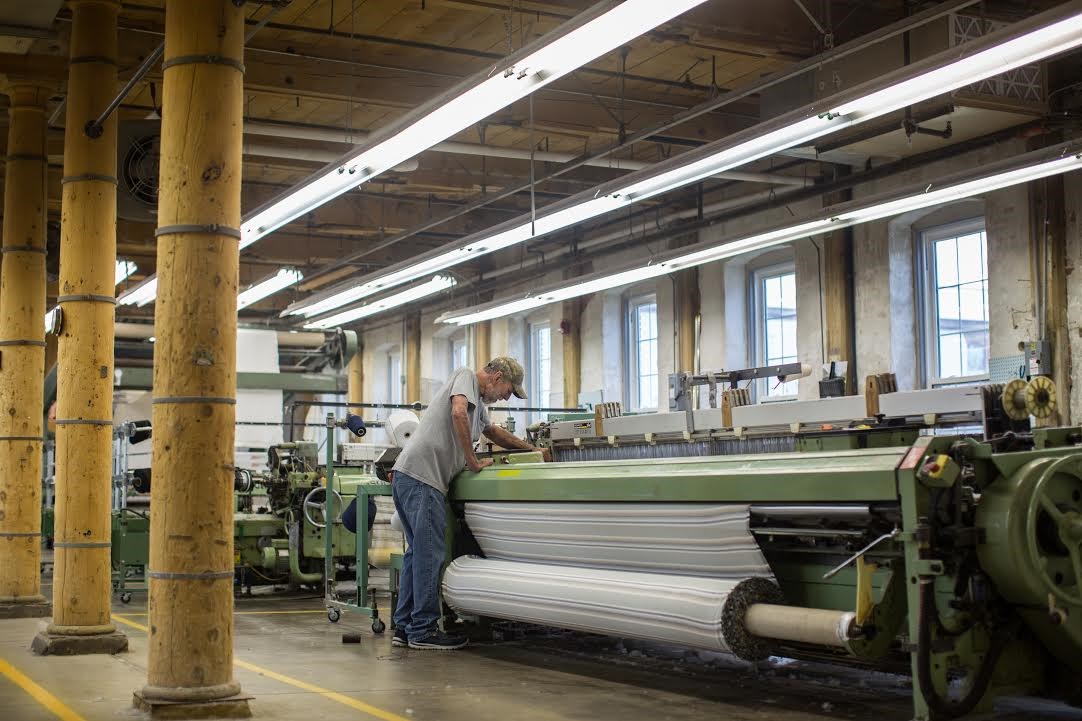Last updated: December 27, 2017
Article
Amana Colonies Today

Photo courtesy of Amana Convention and Visitors Bureau
The Amana of today differs greatly from that of a century before. By the 1930s, the communal system in Amana had generated stresses which it could not resolve. Many community members found the rules associated with communal living to be petty and overly restrictive. Regulations governed most aspects of daily life - including dining, dress and leisure activities. Many felt their annual spending allowance was inadequate and were frustrated by their inability to enjoy more material goods. Elders were increasingly unable to enforce the rules.
In 1931, the community found itself in a crisis. In addition to the social strains of communal living, the community had suffered several economic setbacks in the previous decade. The calico print works had closed after World War I, and the Colonies had lost an important source of revenue. A 1923 fire had damaged a woolen mill and completely destroyed the Amana flour mill. Additionally, the Depression had shrunk the market for the Society's agricultural products.
The elders presented the community with a choice - they could either return to a more austere and disciplined life or they could abandon the communal system. Significantly, dissolution of the church was not considered as an alternative. Members recognized that their community had changed, and returning to the strict life of early communalism would be difficult. Many no longer equated their faith with the social mores dictated by the Community. Furthermore, many members felt that communalism itself was no longer a necessary tenet of faith of the church. On June 1st, 1932, the members elected to retain the traditional church and create a joint-stock company (Amana Society, Inc.) for the business enterprises. The separation of the church from economic activity marked the end of communalism and is referred to as "the Great Change."
Today, the Amana Society, Inc. owns and and manages some 26,000 acres of farm, pasture and forest land. Agriculture remains an important economic base today just as it was in communal times. Because the land was not divided up with the end of communalism, the landscape of Amana still reflects its communal heritage. In addition, over 450 communal-era buildings stand in the seven villages.
The most widely known business that emerged from the Amana Society is Amana Refrigeration, Inc. It was founded by an Amana native, George C. Foerstner at the time of the Great Change. Its first beverage cooler, designed in 1934, was built by craftsmen at the Middle Amana woolen mill. In the decades that followed, the mill became the production site for refrigerators, freezers, and air conditioners.
The Amana Church continues to be a vital part of the Amana community. The Inspirationist cemeteries continue to express the Inspirationist ethos of equality, humility and simplicity. Burial practices have remained the same over 140 years, with members being buried in order of death with plain, uniform headstones.
Like the cemeteries, the Amana churches are much as they were when built 125 years ago. The building exteriors are unpretentious, with no steeple or stained glass. Inside, the unfinished wood floors, plain pine benches, and unadorned walls echo the tradition of humility and piety. Men still enter and sit on one side of a central aisle; women on the other. English language services were introduced in 1960, though German and English services remain largely unchanged - a reading from Scripture; a reading from a testimony from Rock, Metz or Landmann; hymns that would be recognized by a congregation of a century earlier.
Today, heritage tourism has become important to the economy of the Amana area. Historic preservation efforts by several local nonprofit organizations, as well as the Amana Society, Inc. in conjunction with land-use and historic preservation ordinances attempt to preserve the natural and built environment of Amana.
